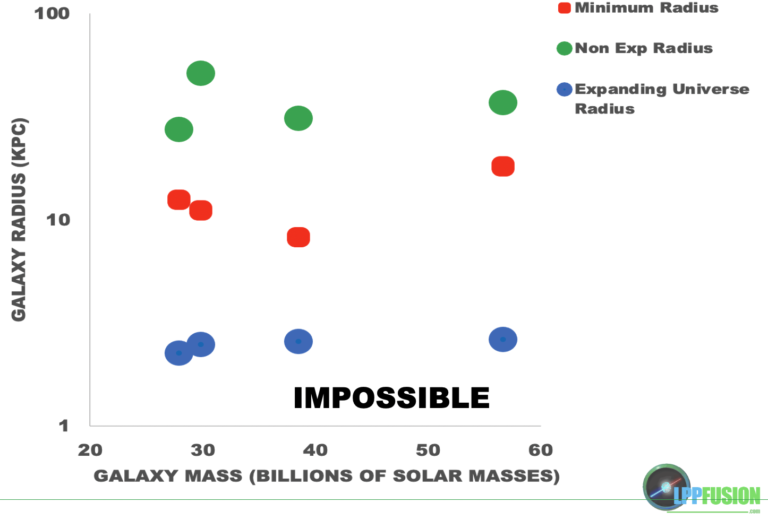In the fourth episode of LPPFusion video series, “JWST and the Big Bang Never Happened Debate”, LPPFusion Chief Scientist Eric J. Lerner shows how data from the ALMA telescope further contradicts the Big Bang hypothesis, and its expanding-universe model. Independent measures of the sizes of distant galaxies based on rotation velocities show that the Big Bang formulae for galaxy sizes can’t be right. The formula would lead to impossible galaxies that have smaller size than these independent measures permit (Fig. 5), yet we know these galaxies are real. It is the Big Bang hypothesis that is impossible. Full story in the video!

Figure 5. Impossible Galaxies graph: Measurements of rotation velocity of gas associated with distant galaxies can be used together with measurements of gas mass to determine the minimum radius of four distant galaxies at a redshift of 4-5( red dots). If velocities are enhanced by magnetic fields, as is likely, the galaxy radius is even bigger. Linear radii calculated from observed angular size assuming a non-expanding universe(green dots) are well above the minimum. But when the expanding universe assumptions are used, the calculated radii (blue dots) are 3-4 times smaller than the minimum, making the galaxies “impossible” for the Big Bang hypothesis. Yet they exist. See the video for full explanation.
